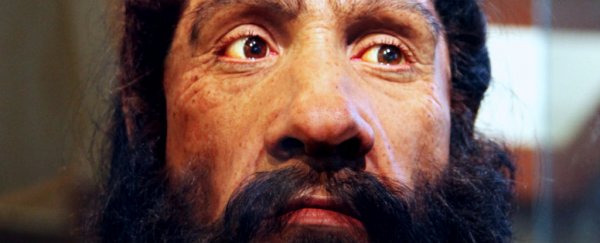The last Neanderthals died out tens of thousands of years ago, but the effects of interbreeding are still being felt today, with a new genetic study revealing that certain traits in modern humans, such as height and schizophrenia risk, can be affected by their ancient genes.
While previous studies have found that Neanderthal DNA comprises about 2 percent of the genomes of most modern humans, it's been difficult to determine if they actually have an effect on our gene expression. But now researchers have finally figured out that this ancient remnant is so much more than a silent snippet of our genome.
"Hybridisation between modern humans and Neanderthals increased genomic complexity," says one of the team, geneticist Joshua Akey from the University of Washington.
"Hybridisation wasn't just something that happened 50,000 years ago that we don't have to worry about anymore. Those little bits and pieces, our Neanderthal relics, are influencing gene expression in pervasive and important ways."
Previous studies have found correlations between Neanderthal genes and modern traits such as metabolism, depression, lupus risk, and certain skin and blood conditions, but have struggled to find a biological reason to explain the link.
And late last year, a team from Montreal found evidence that human-Neanderthal breeding still affects the way our immune systems behave today, suggesting that Neanderthal DNA is partially responsible for the fact that Africans are generally born with stronger immune systems than Europeans, but are more predisposed to certain autoimmune conditions.
Now, Akey and his team have managed to find where these modern variances are in the human genome, and by pinpointing the location on the genetic code, have found biological evidence to support the fact that Neanderthal and human DNA cause genes to be expressed in very different ways.
"We carry a lot of the Neanderthal genome in scattered bits and pieces among individuals today, and if we understand the Neanderthal genome and its function better, then we'll understand the human genome and its function better," Akey told Stephan Kozub at The Verge.
The researchers analysed RNA sequences in a dataset called the Genotype-Tissue Expression (GTEx) Project to identify people who have inherited both Neanderthal and modern human versions (or alleles) of the same genes from their parents.
Each time they identified one of these genes, the team compared the expression of the two alleles in 52 different tissue samples from the 214 subjects.
"We find that for about 25 percent of all those sites that we tested, we can detect a difference in expression between the Neanderthal allele and the modern human allele," says one of the team, Rajiv McCoy.
Oddly enough, they found that the parts of the body that had the lowest level of expression from Neanderthal genes were the brain and the testes, suggesting that these regions in particular experienced a rapid rate of evolution since our human ancestors diverged from Neanderthals some 700,000 years ago.
But one gene in particular still seemed to be under the influence of Neanderthal DNA today - ADAMTSL3, which is thought to decrease the risk of schizophrenia, while also influencing height.
In the past, researchers have suggested that the Neanderthal allele of the ADAMTSL3 gene affects a process called alternative splicing, where signalling molecules called messenger RNAs (mRNAs) are modified before they leave the cell's nucleus to convey different information about how certain genes should be expressed.
The team found that when the Neanderthal mutation was present in certain subjects, the cell actually removed a segment of the mRNA that is expressed in the modern human version.
This means that all it takes is a single mutation from a Neanderthal ancestor to force a cell to produce a modified protein in the ADAMTSL3 gene, say the researchers, adding that this is finally evidence of a causal relationship between a certain genetic mutation and Neanderthal DNA.
"I think that's very exciting to see," says Rasmus Nielsen, an evolutionary biologist at the University of California, Berkeley, who was not involved in the study, told The Verge.
"It changes our view of how we understand ourselves as a species and how we understand human evolution."
Many questions remain, such as how many more genes are there like this that are heavily influenced by Neanderthal DNA, and what are the actual, physical results? And are there other snippets of ancient DNA that are influencing how we turn out as modern humans?
The next step for the team will be to answer that last question - they want to figure out if people of Melanesian ancestry, who carry sequences inherited from the Denisovan people and an unknown human relative, have similar changes in their gene expression.
The study has been published in Cell.
